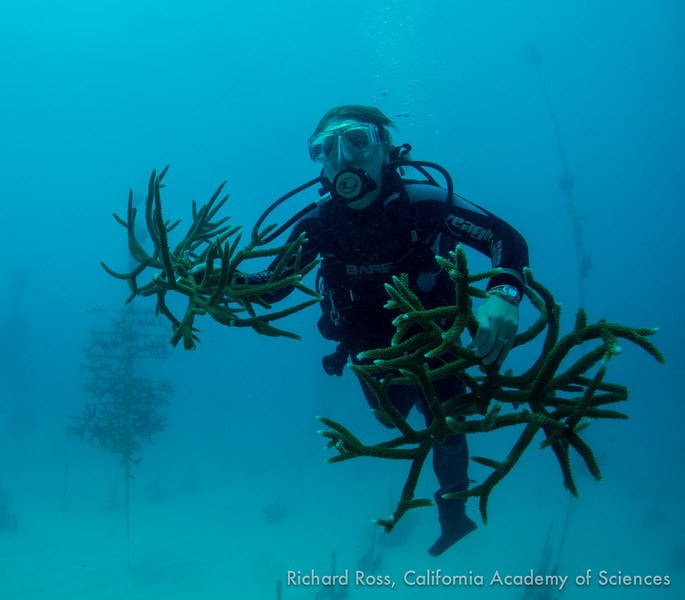
Kristen Aanerud from the Florida Aquarium brings staghorn corals from the Coral Restoration Foundations nursery up to the boat for transport to the lab.
The 2013 Florida Coral Spawning Project, sponsored by the Florida Aquarium and the Coral Restoration Foundation, is having great success this year experiencing a huge coral spawn of critically endangered Staghorn Coral (Acropora cervicornis) and Elkhorn Coral (Acropora palmata) with over 250,000 coral ‘babies’ currently swimming and developing in the onsite lab.
They experienced a huge coral spawn the other night of several species and have ‘babies’ of several species developing in the lab.
-

- Ryan Czaja from Mystic Aquarium places a collection tent over a spawning staghorn coral.
-

- Staghorn coral (A. cervicornis) sperm/egg bundles beginning to seperate.
To give you a brief description, the team is working with critically endangered corals of Acropora cervicornis (staghorn coral) and Acropora palmata (elkhorn coral) with the focus on Acropora cervicornis. The conservation/restoration collaborative project is comprised of representatives from: Mystic Aquarium, The Florida Aquarium, Californina Academy of Sciences, SeaWorld Orlando, Disney’s Living Seas, Akron Zoo, and Coral Restoration Foundation. Basically they monitor parent (sexually mature) colonies on Molasses Reef (off of Tavernier, FL), the Coral Restoration Foundation’s coral site, and the parents that were pulled from CRF’s coral site and placed in the lab for when they spawn or release gamete bundles. Each gamete bundle consists of the eggs and sperm from that genotype of coral and our goal is to mix 2 different genotypes to cross fertilize with the goal of having larvae settle out onto a substrate which then can be replaced back onto the reef at a later date to continue to grow and be monitored.










0 Comments